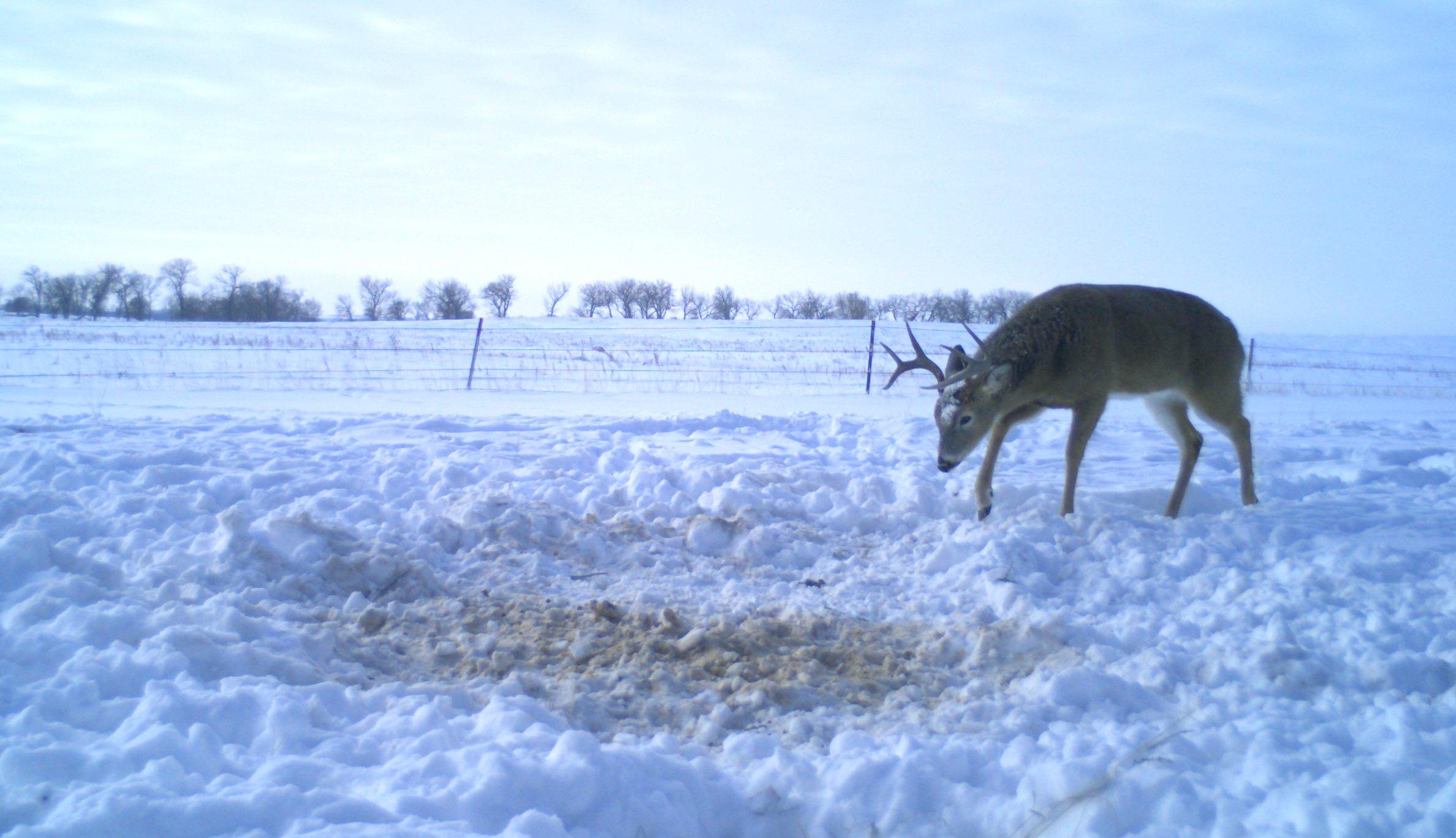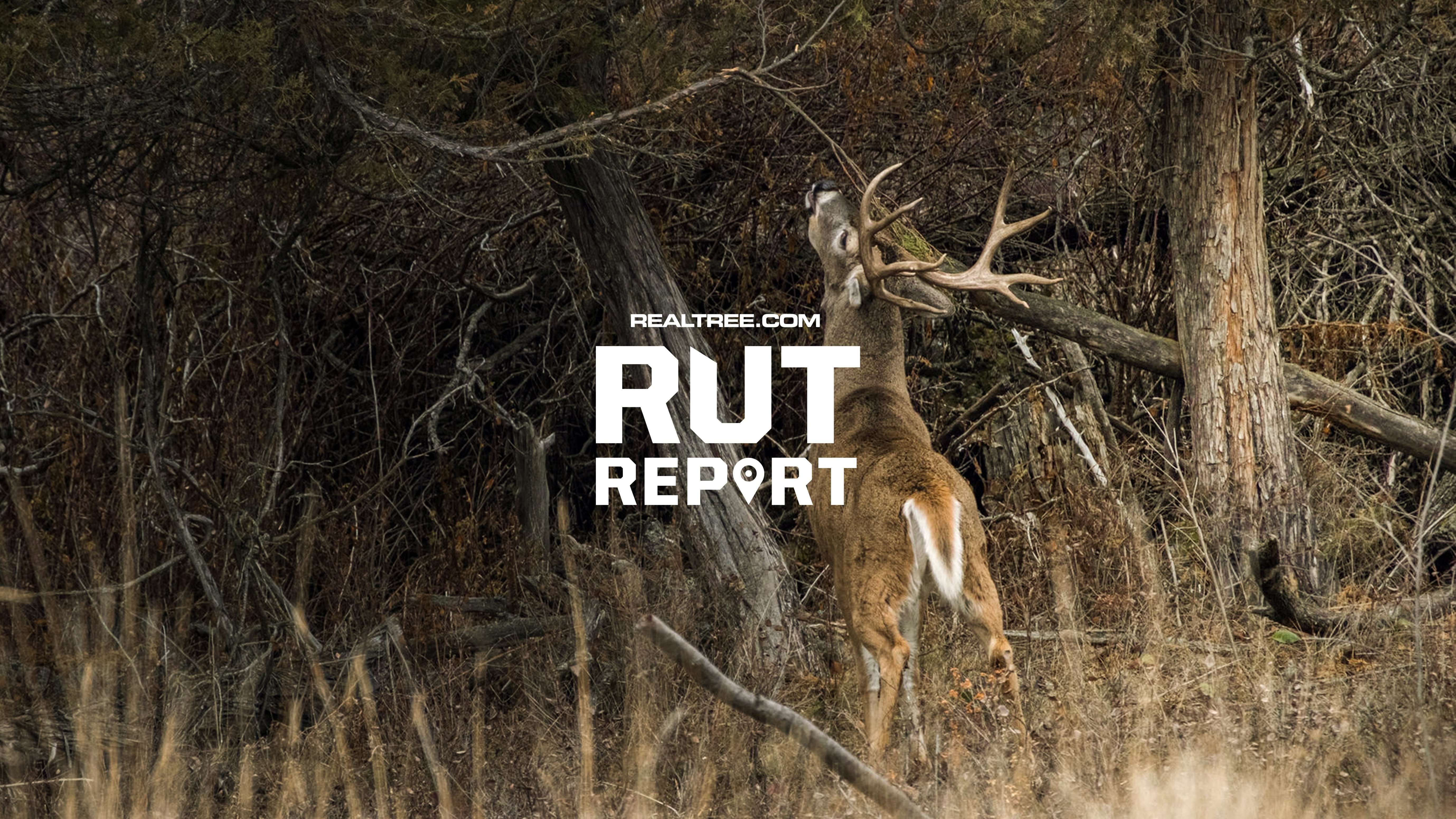Winter 2022 through Spring 2023 devastated the state's whitetail population. Here's the outlook now that the dust has settled

North Dakota’s deer herd was slammed by brutal, unrelenting winter conditions that lasted from November 2022 into April 2023. Extensive statewide winter kill was the result. Photo by Tom Tietz.
Winter 2022 commenced early in North Dakota and finally terminated in April 2023. A monumental weather event struck the state and other areas before Christmas 2022: Winter Storm Diaz. It dumped 1 to 2 feet of snow within days, followed by fierce winds and unrelenting subzero temperatures.
I was dumb enough to bowhunt North Dakota after Diaz. I can’t articulate how ruthless the weather was. Snow drifts were so deep in shelterbelts and cattail sloughs that deer were forced to inhabit wide-open fields where the snow was somewhat navigable because it had drifted to adjacent low-lying areas. Deer were exposed to the fullest extent of the harsh conditions.
I observed animals in many herds curled up and lying in fields to conserve energy. I even saw a herd atop round bales, which served as obvious insulating barriers between their bodies and the ice-cold tundra. Ultimately, I weathered the storm and bow-killed a bull-bodied 4-1/2-year-old 7-pointer. But that’s beside the point.
Check Out Our Latest Camo Pattern: Realtree APX
Ben Matykiewicz, big-game management specialist for the North Dakota Game and Fish Department, said his work provides full perspective to the winter kill and a hopeful rebound.
“The winter and spring of 2022-2023 were definitely challenging for our deer population,” he said. “Not only was it a winter marked by deep snow, but it was persistent, starting in November and lasting into April. Deer had the challenge of navigating deep snow — snow exceeding 15 inches deep — for a prolonged period of time. This forced the deer to utilize their accumulated fat reserves at a faster rate, putting them in a nutritional deficit earlier in the winter and leading to mortality.”
AGE CLASS AND SURVIVAL RATE
All age classes of deer were exposed to brutal conditions, so an obvious question is whether one age class was affected more than others.
DON’T MISS: The 5 Best Spots to Find and Pattern Early Season Whitetails
“Unfortunately, we don’t have great data as to what age classes were affected most by this particular event,” Matykiewicz said. “Based on deer biology, we can surmise that animals that were in greater nutritional condition going into winter fared better than those that were not. Younger animals that were less experienced at acquiring resources or older animals that were less capable of acquiring resources were likely hit the hardest. Likewise, animals (regardless of age) that had to travel farther between cover and food resources were likely affected more since it would require them to expend more energy in order to forage.”
DEPTH AND BREADTH OF IMPACT
North Dakota is a large state. Typically, when brutal winter conditions and spring snowpack yield a winter kill, it’s concentrated in specific regions. Unfortunately, winter’s havoc on North Dakota’s deer wasn’t regional.

Author Darron McDougal bowhunted in North Dakota before Christmas 2022 and witnessed the extent of the winter conditions and the impact they had on deer. He harvested this bull-bodied 4-1/2-year-old buck when the temps were minus 20 without the windchill. Photo courtesy of Darron McDougal.
“This event was statewide,” Matykiewicz said. “The winter weather severity was greater in the state’s eastern half, but overall, we experienced reduced deer numbers throughout the state. Our only estimates are in our Wing-Tuttle monitoring block located in central North Dakota. This area was surveyed in January and April of 2023, and in that time, we observed a 53% decline in deer numbers.”
WERE MULE DEER AFFECTED?
North Dakota has a mule deer population in addition to its whitetails. I asked Matykiewicz how the winter weather affected the state’s muleys.
DON’T MISS: Bowhunter Bags Crazy Club Buck During Tennessee Velvet Season
“Mule deer seemed to have been affected a little less than whitetails,” he said, “but that’s not to say they escaped winter. We still observed a 29% decrease in our spring survey index compared to the year prior.”
THE FUTURE
What does this mean for North Dakota’s deer population, and what can hunters expect going forward?
“Overall, the deer herd is down, as expected, following a winter like 2022-2023,” Matykiewicz said. “Fortunately, this past winter was mild, and we had an early green-up this spring. These conditions generally equate to increased over-winter survival, healthier deer coming out of winter, and improved fawn production. Barring any future weather events, we should hopefully start to see the deer population rebound.”












